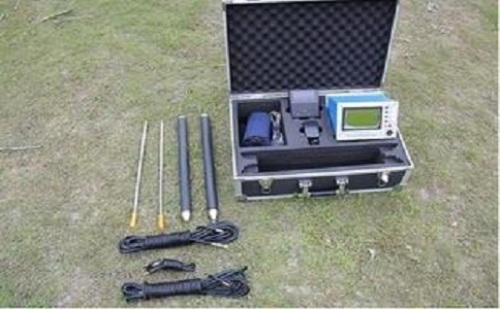Introduction: Water source detectors are mainly used for detailed investigation and exploration of groundwater to solve the needs of drinking water, industrial water and agricultural irrigation, which can greatly ease the predicament of water shortage. This article mainly popularizes the relevant knowledge of the water source detector.

Water source detector is referred to as "water detector" or "water detector". In recent years, water shortages have been buoyant. Domestic areas including Xinjiang, Yunnan-Guizhou and Guangxi Hechi have special water shortage areas, and foreign markets mainly focus on Africa and the Middle East. Water source detectors bring the greatest benefit to people through open source drainage, which can alleviate the difficulties of drinking water and water. What kind of artifact is that water source detector? How does it work?
At present, there are mainly two types of equipment that are used for water resources detection in scientific and technological research and development. The principle of these two devices is the same. They use natural electric fields as the detection field source, and use the changes in the resistivity changes and other related parameters generated by different natural electric fields and geological structures to judge and analyze the groundwater (base rock fissure water, Cave water, pebble water, etc.). The difference is that the first type of equipment ADMT series is equipped with a clear image of the three-dimensional geological structure of cross-section analysis software, more intuitive and concrete to see the location of the groundwater, depth, the amount of water and other related information. While another MPI series is equipped with curve analysis software, the operator determines the final water outlet position and depth based on changes in the probe data curve. Compared to the two series, the ADMT series technology is relatively mature, the operation is simpler, the analysis is faster, and the information is more comprehensive.
How to distinguish the detection depth of water detectors? General professional water source detectors do not directly indicate the maximum depth of detection on the nameplate. Some operators do not know how to distinguish the depth of detection of the water source detector. In fact, the water source detector mainly uses the frequency sounding method, and the depth of detection is analyzed based on the measurement frequency. The frequency is low, the resistivity of underground rocks is high, the electromagnetic wave penetration depth is large, the frequency is high, the underground rock resistivity is low, and the penetration depth is shallow. As long as the frequency of the field is changed, the relevant components of the electromagnetic field are observed at a fixed point on the ground and calculated according to the observation results. Resistivity values ​​can reflect the geology of different depths. In short, the depth of the high-frequency effect is shallow, and the depth of the low-frequency effect is large. For example, in bedrock fissure water, 4900HZ can measure 10 meters, 3300HZ can measure 25 meters, 2000Hz can measure 40 meters, 600HZ can measure 80 meters, 300HZ can measure 120 meters, and 170Hz can measure about 150 meters.
With the development of industrialization in the global cities, industrial water consumption has increased dramatically, and water resources construction projects have become increasingly severe. Open source drainage and development of groundwater resources have become the most important measures in the construction of water resources projects. Such as China's "South-to-North Water Transfer Project" "Yellow River drainage" and other water source construction projects. The construction of water resources projects is inseparable from the help of water source survey equipment. In recent years, professional water source water detectors have been gradually applied to water source construction projects and have become the main role of water source construction projects.
EEP (Ethyl 3-Ethoxypropionate) is a slow evaporating ether-ester solvent with excellent activity for a wide range of coating polymers. Ethyl 3-ethoxypropionate Uses linear structure and propionyl group in the center of the molecule give this material a combination of desirable properties not found in other solvents. These include a slow evaporation rate Solvent Raw Material, good resistance to solvent popping in baking applications, a moderate odor, low surface Pvc Resin tension and high electrical resistance. In addition, Ethyl 3-ethoxypropionate Sds yields low polymer solution viscosities when compared to solvents with Ethylene-Vinyl Acetate similar evaporation rates, provides excellent solvent release from coating films, and gives exceptional flow and leveling with a wide range of coatings. It is supplied as a urethane grade solvent.
Ethyl 3-ethoxypropionate Market is a high-performance ether ester solvent, which has good solubility for a wide range of coating polymers. It has moderate odor, low surface tension and high resistivity. Ethyl 3-ethoxypropionate Cas is an effective solvent for preparing high-quality baking paint and air-drying paint, which has the following excellent properties.
Ethyl 3-ethoxypropionate Uses,Ethyl 3-ethoxypropionate Sds,Ethyl 3-ethoxypropionate Market,Ethyl 3-ethoxypropionate Cas
HENAN LIHAO CHEM PLANT LIMITED , https://www.lihaoche.com